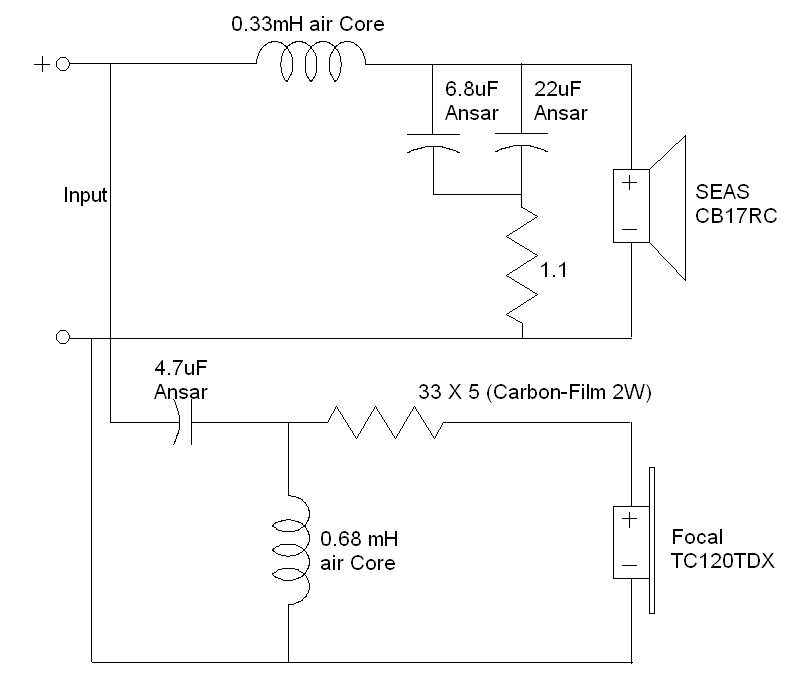
The X-Over used is simple and to the point. The so called Diffraction loss is not compensated (as it is also the case with the Originals). As a result the lower mid and bass is shelved down, with respect to the Frequencies around 1kHz. This is compensated if the Speaker is employed in a Nearfield Envoironment on top of a Mixing Desk. If a Free-Field positioning is used these Frequencies need to be reinforced by an additional Woofer.
The Midrange-Bass X-over is a simple 2nd order lowpass, the Q of which is adjusted by the resistor in series with the capacitor. The tweeter has an even simpler 2nd order highpass and a series-resistor to set the Level.
All Parts should be of the highest Quality. I used Monacor Air-Coils, Ansar Supersound 450V rated metalised Polypropylen Capacitors and multiple carbon composite resistors for the Tweeter Attenuator.
All components where hard-wired using as much as possible the component leads. Star type wiring was observed. Silverbearing solder was used. The X-Over is sited in a small non-metallic Box within which it is potted using Bees Wax.
Initially the Wire used was normal Speaker-Wire (12-Gauge Radioshack "Megacable"). This was later changed to a DIY Litzwire based on 49 Strands of 30-Gauge, individually Kynar (modified teflon) insulated, silverplated oxygen free copper. This 30-Gauge "High-End" wire is commonly known as wirewrap wire and is sold by a range of sources. This "Litzwire" is a notably better choice than conventional speakerwire and highly recommended.